
- Shandong Loyal Industrial Co.,Ltd.
- SHORT-CUT PASTA PRODUCTION LINE LONG-CUT PASTA PRODUCTION LINE INSTANT PASTA PRODUCTION LINE
Home> Application> Elevate Your Pasta Production with a Fully Automatic Macaroni Extruder

Elevate Your Pasta Production with a Fully Automatic Macaroni Extruder
Introduction
Shandong Loyal Industrial Co., Ltd. has incorporated advanced technologies from FAVA and AXOR in the production of its macaroni.Pasta production has evolved significantly over the years, with advancements in technology playing a pivotal role. From traditional methods to modern industrial processes, the quest for efficiency and quality remains constant. In this context, the integration of macaroni extruders emerges as a game-changer.
As the global demand for pasta continues to rise, the food industry faces the challenge of meeting consumer expectations efficiently. Automation has become a cornerstone in addressing this challenge, allowing for increased production rates and consistent product quality. The adoption of fully automatic macaroni extruders aligns seamlessly with this trend.
Macaroni extruders play a pivotal role in modern pasta manufacturing, providing manufacturers with the capability to streamline their production processes. The ability to produce a variety of pasta shapes with precision enhances the overall efficiency and versatility of pasta production lines.

Understanding Macaroni Extruders
A macaroni extruder is a sophisticated piece of machinery designed to automate the pasta shaping process. It operates by forcing a mixture of semolina and water through various dies, resulting in the creation of specific pasta shapes. The functionality is intricate, ensuring that the final product meets the desired quality standards.
Macaroni extruders come in various types, each catering to specific production needs. Single-screw and twin-screw extruders are common, offering different levels of throughput and precision. Understanding these types is crucial for pasta manufacturers seeking to optimize their production lines.
The success of a macaroni extruder lies in its features and components. From robust frames to advanced control systems, each element contributes to the overall performance. Manufacturers should prioritize understanding these features to make informed decisions during the selection process.
Advantages of Utilizing Macaroni Extruders
The integration of macaroni extruders brings a notable increase in efficiency to pasta production. The automated nature of these machines reduces manual labor, accelerates the shaping process, and enhances overall output.
Consistency is paramount in the pasta industry, and macaroni extruders excel in delivering uniform shapes and quality. This reliability not only meets consumer expectations but also strengthens the brand reputation of pasta manufacturers.
Macaroni extruders contribute to cost-effectiveness by minimizing waste and optimizing resources. The precise control over ingredients and the shaping process leads to a reduction in raw material wastage, making these machines an economically viable investment.

How to Choose the Right Macaroni Extruder
Selecting the right macaroni extruder is a critical decision for pasta manufacturers. Factors such as production scale, desired pasta varieties, and budget constraints need thorough consideration. Consulting with industry experts and conducting a detailed analysis of specific needs will guide manufacturers towards an informed choice.
Understanding the production capacity and speed of a macaroni extruder is fundamental. Manufacturers must align the machine's capabilities with their production goals to avoid bottlenecks. Striking a balance between speed and precision ensures optimal performance throughout the pasta production process.
The ability to customize pasta shapes is a distinctive feature of advanced macaroni extruders. Manufacturers looking to offer unique products should prioritize machines that provide flexibility in shaping options. This customization enhances product differentiation in a competitive market.
Installation and Maintenance Guidelines
Efficient installation of a macaroni extruder is crucial for its optimal functioning. Following a step-by-step installation process, including proper calibration and testing, ensures that the machine integrates seamlessly into the pasta production line. Manufacturers should adhere to manufacturer guidelines and seek professional assistance if needed.
To maximize the lifespan and efficiency of a macaroni extruder, regular maintenance is essential. This involves routine inspections, cleaning, and lubrication of key components. Manufacturers should establish a comprehensive maintenance schedule to prevent unexpected downtime and ensure consistent performance.
Despite their reliability, macaroni extruders may encounter issues. Manufacturers should be familiar with common problems such as clogging or irregular shaping and be equipped with troubleshooting procedures. Having a well-trained maintenance team is crucial for quickly addressing and resolving any operational issues.
Case Studies: Successful Integration of Macaroni Extruders
Several pasta manufacturers have successfully integrated macaroni extruders into their production processes. One notable example is the implementation at Ronzoni, a renowned pasta brand. By adopting fully automatic macaroni extruders, Ronzoni achieved a significant increase in production efficiency, allowing them to meet growing market demands.
The impact of macaroni extruders on production output and quality is evident in brands like Colavita and La Molisana. These manufacturers witnessed a substantial improvement in the uniformity of macaroni shapes and overall product quality. Customer satisfaction and brand loyalty increased as a result.
Industry experts, such as those from Banza, have provided positive testimonials regarding the adoption of macaroni extruders. Banza, known for its innovative pasta products, emphasizes how these machines have allowed them to push the boundaries of pasta production, creating unique and healthier alternatives.
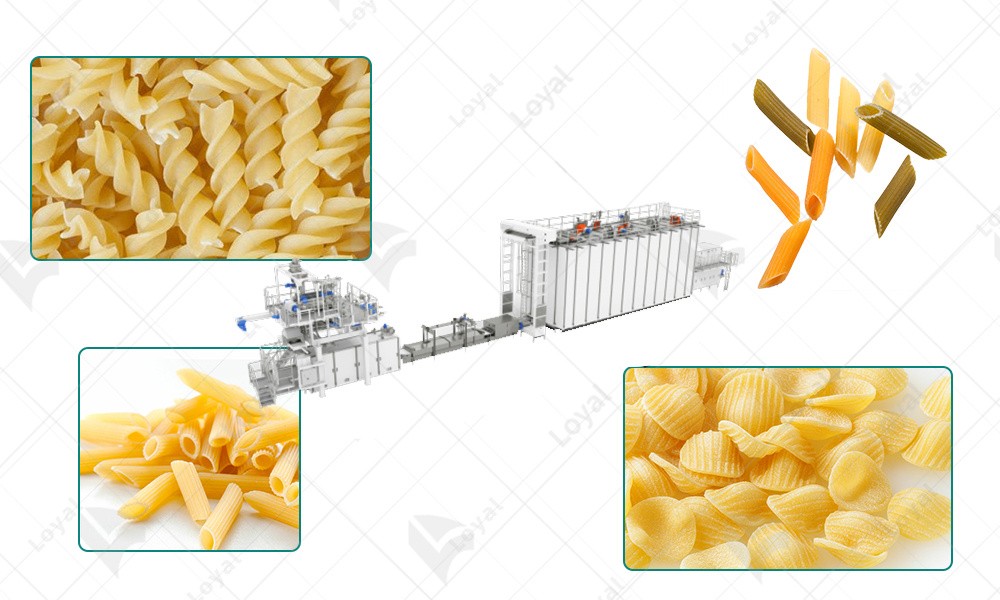
Future Trends in Macaroni Extruder Technology
The future of macaroni extruders holds exciting possibilities with ongoing innovations. Advancements in materials, automation, and smart technologies are anticipated. Staying abreast of these trends will be crucial for manufacturers looking to stay competitive in the evolving landscape of pasta production.
Sustainability is a growing concern in the food industry. Macaroni extruder manufacturers are exploring eco-friendly materials and energy-efficient processes. This shift towards sustainability aligns with the broader industry movement towards environmentally conscious practices.
The increasing global demand for pasta presents a promising outlook for macaroni extruder manufacturers. Opportunities for market growth lie in catering to diverse consumer preferences, expanding product lines, and exploring emerging markets. Adapting to these opportunities will be key for sustained success.
Conclusion
In conclusion, the adoption of fully automatic macaroni extruders has revolutionized the pasta manufacturing landscape. The benefits are manifold, including increased efficiency, consistency in macaroni shapes, and cost-effectiveness. Pasta manufacturers, exemplified by industry leaders like Ronzoni, Colavita, La Molisana, and Banza, have experienced tangible improvements in production output and product quality.
Encouraging the broader adoption of automation, specifically through macaroni extruders, is pivotal for the future of pasta production. Industry experts emphasize the positive impact on efficiency, quality, and innovation. As sustainability becomes a focal point, the integration of eco-friendly practices in macaroni manufacturing is expected to shape the industry's trajectory.
In a rapidly evolving food industry, the role of macaroni extruders in elevating pasta manufacturing cannot be overstated. From precision shaping to sustainable practices, these machines embody the technological advancements driving the sector forward. As pasta manufacturers navigate the path towards excellence, embracing the capabilities of macaroni extruders will undoubtedly contribute to their success.
FAQs: Common Questions about Macaroni Extruders
1. What is a macaroni extruder, and how does it work?
A macaroni extruder is a specialized piece of machinery used in pasta production. It works by forcing a mixture of semolina and water through dies of various shapes, resulting in the creation of specific pasta shapes. The process is automated, enhancing efficiency and precision in shaping.
2. Are there different types of macaroni extruders?
Yes, there are various types of macaroni extruders available in the market. Common types include single-screw and twin-screw extruders, each offering different levels of throughput and precision. Choosing the right type depends on the specific needs and production goals of pasta manufacturers.
3. How can pasta manufacturers benefit from using macaroni extruders?
Pasta manufacturers can benefit from macaroni extruders in several ways. These machines increase efficiency, ensure consistency in macaroni shapes and quality, and contribute to cost-effectiveness by minimizing waste. Case studies from industry leaders like Ronzoni and Colavita highlight the tangible improvements in production output and product quality.
4. What should manufacturers consider when choosing a macaroni extruder?
When selecting a macaroni extruder, manufacturers should consider factors such as production scale, desired pasta varieties, and budget constraints. Evaluating production capacity, speed, and customization options for macaroni shapes is crucial. Consulting with industry experts and following proper installation and maintenance guidelines are also key considerations.
5. What does the future hold for macaroni extruder technology?
The future of macaroni extruder technology involves ongoing innovations, including advancements in materials, automation, and sustainability. Manufacturers are exploring eco-friendly materials and energy-efficient processes. The anticipated market growth and opportunities lie in catering to diverse consumer preferences and emerging markets.
Contact Us

- Shandong Loyal Industrial Co.,Ltd.
- Telephone+86 13176674591
- Email[email protected]
- WhatsApp+86 13176674591
- WeChat13176674591
- AddressC623, Jiahui Global Plaza, No. 548, Beiyuan Street, Tianqiao District, Jinan City, Shandong Province
- Factory AddressADD -300m North of Zhangxia Industrial Park, Binhe Road, Zhangxia Town, Changqing District, Jinan
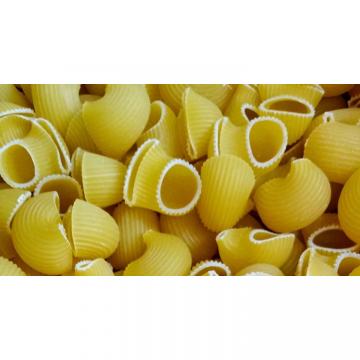

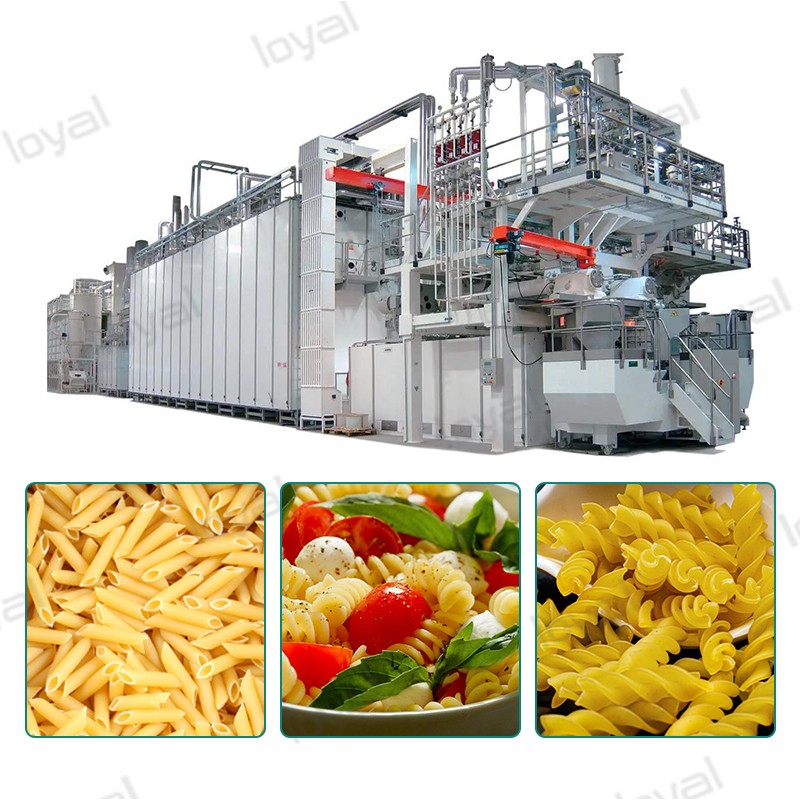

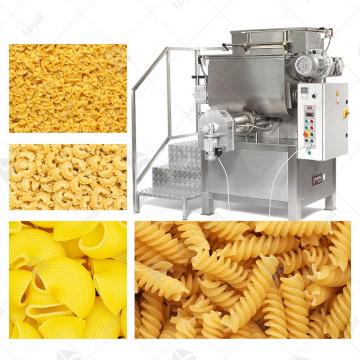
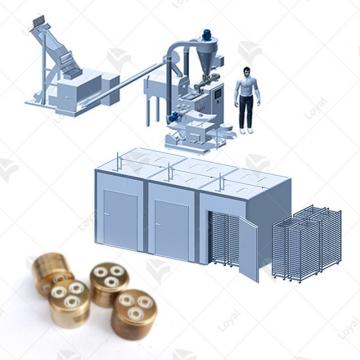 Combined Pasta Production Line
Combined Pasta Production Line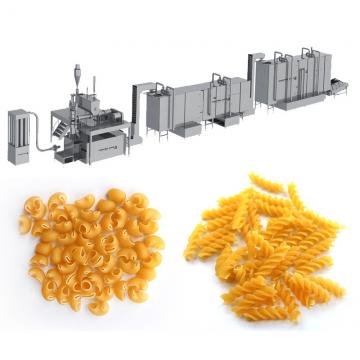 Vacuum Extruder Pasta Machine
Vacuum Extruder Pasta Machine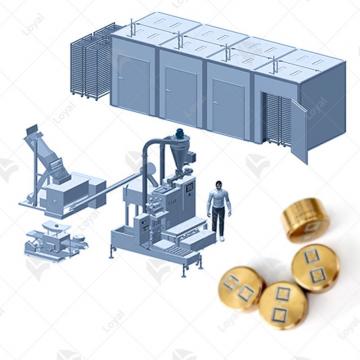 Combined Pasta Machine
Combined Pasta Machine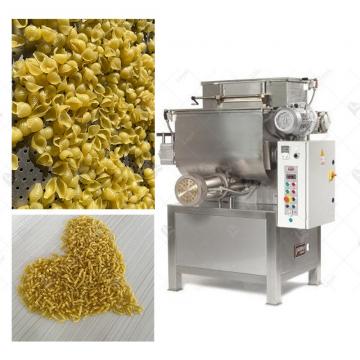 PRECOOKED PASTA PRODUCTION LINE
PRECOOKED PASTA PRODUCTION LINE